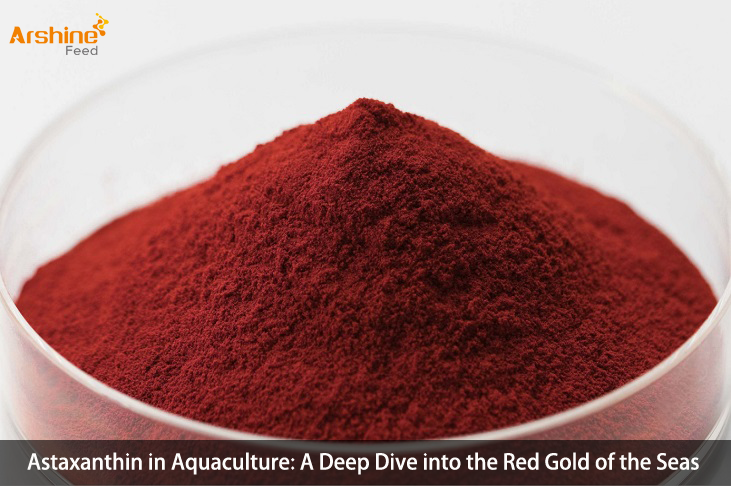

Introduction:
In the realm of aquaculture, the pursuit of optimal growth, vibrant coloration, and overall health of aquatic organisms has led to the exploration of various nutritional supplements. One compound that has gained significant attention is astaxanthin, often referred to as the "red gold of the seas." Astaxanthin, a carotenoid pigment, not only contributes to the vivid colors seen in marine life but also plays a crucial role in enhancing the performance and well-being of aquaculture species. This article delves into the multifaceted role of astaxanthin in aquaculture, exploring its sources, benefits, and applications.
I. Understanding Astaxanthin:
A. Origin and Sources:
Astaxanthin is a naturally occurring carotenoid pigment found in a variety of aquatic organisms, including microalgae, crustaceans, and certain fish species. Microalgae are primary producers of astaxanthin, and it forms the base of the aquatic food chain. Crustaceans like shrimp and krill accumulate astaxanthin by consuming microalgae or other organisms that contain the pigment. Fish species such as salmon, trout, and arctic char obtain astaxanthin by consuming crustaceans.
B. Chemical Structure and Function:
The chemical structure of astaxanthin includes a long chain of conjugated double bonds and a keto group at one end. This unique structure imparts potent antioxidant properties to astaxanthin, making it a powerful quencher of free radicals. In aquaculture, this antioxidant capacity is particularly valuable for mitigating oxidative stress, a common concern in the rearing of aquatic species.
II. Astaxanthin's Impact on Aquatic Species:
A. Growth and Development:
One of the primary roles of astaxanthin in aquaculture is its contribution to the growth and development of aquatic organisms. Research has shown that astaxanthin enhances the growth rates of fish and shrimp, leading to increased biomass. This effect is attributed to the compound's influence on various physiological processes, including the promotion of nutrient absorption and utilization.
B. Coloration:
Astaxanthin is renowned for its role in enhancing the vibrant colors observed in many marine species, such as salmon, trout, shrimp, and crabs. The pigment is particularly vital in the aquaculture industry, where the visual appeal of seafood significantly influences consumer preferences. The incorporation of astaxanthin into the diet of aquaculture species can result in more vibrant and attractive coloration, thereby increasing the market value of the harvested products.
C. Reproductive Performance:
The reproductive success of aquaculture species is paramount for sustaining populations and ensuring the long-term viability of commercial operations. Astaxanthin has been found to positively influence the reproductive performance of various aquatic organisms. It is believed to enhance fertility, increase egg production, and improve the survival rates of larvae and juveniles.
III. Applications of Astaxanthin in Aquaculture:
A. Dietary Supplementation:
Astaxanthin is commonly administered to aquaculture species through dietary supplementation. Fish feeds, especially those formulated for species like salmon and trout, often contain astaxanthin to ensure the development of vibrant coloration and optimal growth. The inclusion of astaxanthin in shrimp feeds has also become a standard practice in crustacean aquaculture.
B. Health Management:
The antioxidant properties of astaxanthin play a crucial role in health management within aquaculture systems. Oxidative stress, often induced by factors like environmental changes, transportation, or diseases, can negatively impact the well-being of aquatic organisms. Astaxanthin helps mitigate oxidative stress by neutralizing free radicals, thereby promoting overall health and reducing the susceptibility to diseases.
C. Aquatic Ecosystems:
Beyond its direct application in aquaculture, astaxanthin has broader implications for aquatic ecosystems. As a natural pigment that originates from microalgae, astaxanthin contributes to the ecological balance by supporting the food web. Understanding and harnessing the dynamics of astaxanthin in aquatic ecosystems can have far-reaching consequences for both natural environments and sustainable aquaculture practices.
IV. Challenges and Considerations:
While astaxanthin offers numerous benefits in aquaculture, there are challenges and considerations associated with its use. These include the environmental impact of sourcing astaxanthin, potential interactions with other dietary components, and the cost implications for aquaculture operations. Researchers and industry professionals are actively exploring sustainable sources of astaxanthin and optimizing its inclusion in aquafeeds to address these challenges.
Conclusion:
In the dynamic world of aquaculture, astaxanthin stands out as a remarkable compound with multifaceted benefits. From enhancing coloration to promoting growth and reproductive success, astaxanthin plays a pivotal role in shaping the outcomes of aquaculture operations. As the aquaculture industry continues to evolve, understanding the nuances of astaxanthin's impact on aquatic organisms will contribute to the development of sustainable and environmentally conscious practices, ensuring the enduring appeal of the "red gold of the seas."
Add: Block 14, No.100, Luyun Road,Changsha 410205,China.
Mobile: +86 18874001228
Email: info@arshinefeed.com
WhatsApp: 8618874001228
WeChat: weiyuyan91